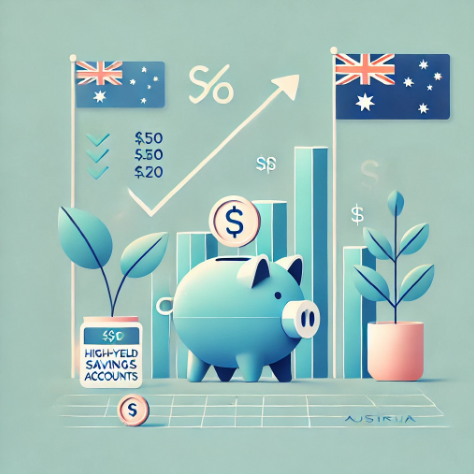Australia’s ETF market has been witnessing significant growth, drawing attention from investors who seek cost-effective ways to diversify. With Exchange Traded Funds (ETFs), individuals can gain exposure to various asset classes without breaking the bank. Understanding how the ETF market operates and knowing how to invest wisely is crucial for those looking to enhance their portfolios.
By focusing on the ETF market, investors can achieve diversification and access a wide range of opportunities. This article dives deep into Australia’s ETF landscape, exploring the advantages, strategies, and tips to invest efficiently while keeping costs low. Continue to reading and discover all the details:
Understanding the ETF market

The Exchange Traded Fund arena offers unique advantages for investors eager to diversify. Essentially, ETFs are investment funds traded on stock exchanges, much like regular stocks, offering a blend of features from mutual funds and equity trading. In Australia, the ETF market has been growing steadily, providing a plethora of options for both seasoned and novice investors.
The simplicity and flexibility of ETFs make them an ideal tool for building a diversified portfolio. Investors can access a broad spectrum of market segments with just a single transaction, reducing the complexity of managing multiple individual investments. Australian ETFs cover everything from local index-based funds to those tracking global markets, sector-specific assets, or even commodities.
Diverse investment opportunities
Australia’s ETF environment provides a wealth of options for investors aiming to diversify their holdings. One of the primary attractions of ETFs is the ability to gain exposure to a broad market index, such as the S&P/ASX 200, with a single investment. Additionally, thematic or sector-specific ETFs allow investors to zero in on particular industries, such as technology, healthcare, or agriculture, enabling targeted diversification without high expenses.
ETFs also extend beyond equities, catering to those interested in commodities, fixed income, or international markets. Commodity-based ETFs can include investments in gold, oil, or agricultural products, providing investors with an opportunity to hedge against inflation or currency fluctuations. Bond ETFs, on the other hand, deliver access to fixed-income markets and can be ideal for investors seeking income and stability within their portfolios.
How to invest with low costs
Investing in the Australian ETF landscape at a low cost requires strategic planning and a keen eye on expenses. One of the first steps investors should consider is choosing ETFs with low management fees, commonly referred to as expense ratios. These fees are charged annually and deducted from the returns of the fund. By selecting ETFs with minimal expense ratios, investors can enhance their net returns over the long term.
Another cost-effective strategy involves utilizing an online brokerage service to avoid unnecessary fee structures associated with more traditional financial institutions. Many of these platforms provide lower trading fees and offer a range of ETFs to choose from without incurring additional costs. Additionally, leveraging tax-efficient investment accounts like Self-Managed Super Funds (SMSFs) can maximize returns while staying within regulatory guidelines.
Building a diversified portfolio with ETFs
Constructing a balanced portfolio using ETFs involves a careful selection process to ensure adequate diversification and risk management. Begin by assessing personal investment goals and risk tolerance to determine the optimal asset allocation. A diversified ETF portfolio should comprise various asset classes, including equities, bonds, and possibly commodities, to mitigate risk.
For investors starting out, broad market index ETFs serve as excellent foundation stones due to their inherent diversification. These funds typically track well-known indices and provide exposure to multiple sectors and companies within a single instrument. To introduce further diversification, investors can layer in more specialized ETFs, focusing on specific industries or regions.
Tapping into international markets
Engaging in international markets through Australian ETFs can significantly broaden an investor’s horizon. Global ETFs allow Australians to own a stake in overseas companies without the complexities of direct foreign stock purchasing. This international exposure provides valuable diversification, as different markets may perform independently of each other.
Investors can opt for broad international ETFs that cover established markets, like the United States, Europe, or emerging economies. Such diversification grants access to economic growth drivers outside Australia, positioning the portfolio for enhanced growth potential. ETFs focusing on emerging markets further diversify risk by investing in countries with developing economies, often offering higher growth trajectories compared to their developed market counterparts.
Benefits of ETF investment in Australia
The advantages of investing in ETFs within Australia extend far beyond simple diversification and cost savings. The efficiency and transparency of these financial tools contribute to their appeal among investors. ETFs provide real-time pricing and liquidity, enabling investors to execute trades at their preferred market prices, ensuring greater control over transaction timing.
The Australian ETF market continues to grow, driven by innovations in product offerings and an increasing number of thematic funds catering to various investor interests. This evolution allows investors to stay ahead of market trends and position themselves strategically within different sectors. The competitive fee structures of ETFs compared to traditional mutual funds make them an attractive alternative for cost-conscious investors.



